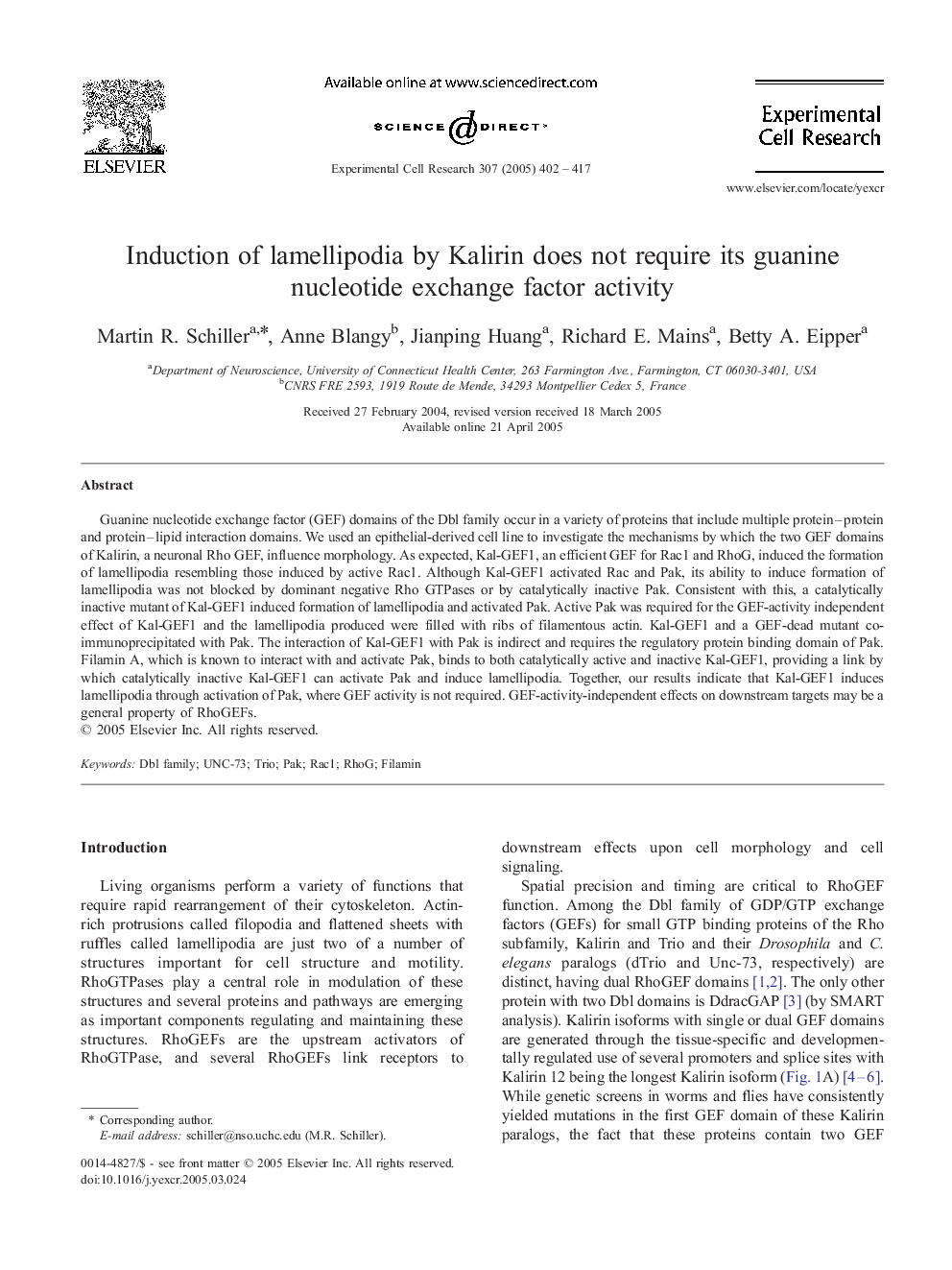| Article ID | Journal | Published Year | Pages | File Type |
|---|---|---|---|---|
| 10904973 | Experimental Cell Research | 2005 | 16 Pages |
Abstract
Guanine nucleotide exchange factor (GEF) domains of the Dbl family occur in a variety of proteins that include multiple protein-protein and protein-lipid interaction domains. We used an epithelial-derived cell line to investigate the mechanisms by which the two GEF domains of Kalirin, a neuronal Rho GEF, influence morphology. As expected, Kal-GEF1, an efficient GEF for Rac1 and RhoG, induced the formation of lamellipodia resembling those induced by active Rac1. Although Kal-GEF1 activated Rac and Pak, its ability to induce formation of lamellipodia was not blocked by dominant negative Rho GTPases or by catalytically inactive Pak. Consistent with this, a catalytically inactive mutant of Kal-GEF1 induced formation of lamellipodia and activated Pak. Active Pak was required for the GEF-activity independent effect of Kal-GEF1 and the lamellipodia produced were filled with ribs of filamentous actin. Kal-GEF1 and a GEF-dead mutant co-immunoprecipitated with Pak. The interaction of Kal-GEF1 with Pak is indirect and requires the regulatory protein binding domain of Pak. Filamin A, which is known to interact with and activate Pak, binds to both catalytically active and inactive Kal-GEF1, providing a link by which catalytically inactive Kal-GEF1 can activate Pak and induce lamellipodia. Together, our results indicate that Kal-GEF1 induces lamellipodia through activation of Pak, where GEF activity is not required. GEF-activity-independent effects on downstream targets may be a general property of RhoGEFs.
Related Topics
Life Sciences
Biochemistry, Genetics and Molecular Biology
Cancer Research
Authors
Martin R. Schiller, Anne Blangy, Jianping Huang, Richard E. Mains, Betty A. Eipper,
